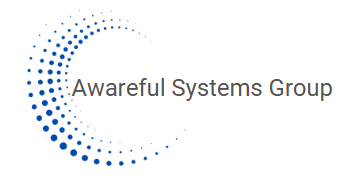People and Organization
Axelrod, R. H. (2010). Terms of engagement: New ways of leading and changing organizations. San Francisco, CA: Berrett-Koehler Publishers.
Brafman, O., & Beckstrom, R. A. (2006). The starfish and the spider: The unstoppable power of leaderless organizations. New York: Portfolio.
Brafman, O., & Pollack, J. (2013). The chaos imperative: How chance and disruption increase innovation, effectiveness, and success.
Christensen, C. M. (1997). The innovator’s dilemma: When new technologies cause great firms to fail. Boston, Mass: Harvard Business School Press.
Easton, D. & Solow, L. (2016) Complexity Works!: Influencing Pattern-Based Change in Teams and Organizations
Collins, R. (2010). Leadership in a Wiki World: Leveraging Collective Knowledge To Make the Leap To Extraordinary Performance.
Eoyang, G. H., & Holladay, R. J. (2013). Adaptive action: Leveraging uncertainty in your organization. Stanford, Calif: Stanford Business Books.
Goldstein, J., Hazy, J. K., & Lichtenstein, B. B. (2010). Complexity and the nexus of leadership: Leveraging nonlinear science to create ecologies of innovation. New York: Palgrave Macmillan.
Griffin, D. (2002). The emergence of leadership: Linking self-organization and ethics. London: Routledge.
Griffin, D., & Stacey, R. D. (2005). Complexity and the experience of leading organizations. London: Routledge.
Holman, P. (2010). Engaging emergence: Turning upheaval into opportunity. San Francisco, CA: Berrett-Koehler Pub.
Hurst, D. K. (2012). The new ecology of leadership: Business mastery in a chaotic world. New York: Columbia University Press.
Johnson, S. (2010). Where good ideas come from: The natural history of innovation. New York: Riverhead Books.
Latting, J. K., & Ramsey, V. J. (2009). Reframing change: How to deal with workplace dynamics, influence others, and bring people together to initiate positive change. Santa Barbara, Calif:
Praeger.
Lewin, R., & Regine, B. (2001). Weaving complexity and business: Engaging the soul at work. New York: Texere.
Lipmanowicz, H., & McCandless, K. (2014). The surprising power of liberating structures: Simple rules to unleash a culture of innovation.
McGoff, C. J. (2012). The primes: How any group can solve any problem. Hoboken, NJ: Wiley.
Morgan, G. (1986). Images of organization. Beverly Hills: Sage Publications.
Page, S. E. (2007). The difference: How the power of diversity creates better groups, firms, schools, and societies. Princeton: Princeton University Press.
Patton, M. Q. (2011). Developmental evaluation: Applying complexity concepts to enhance innovation and use. New York: Guilford Press.
Petzinger, T. (1999). The new pioneers: The men and women who are transforming the workplace and marketplace. New York: Simon & Schuster.
Regine, B. (2010). Iron butterflies: Women transforming themselves and the world. Amherst, N.Y: Prometheus Books.
Shaw, P. (2002). Changing conversations in organizations: A complexity approach to change. London: Routledge.
Stacey, R. D. (2005). Experiencing emergence in organizations: Local interaction and the emergence of global pattern. London: Routledge.
Stacey, R. D. (2001). Complex responsive processes in organizations: Learning and knowledge creation. London: Routledge.
Stacey, R. D. (2003). Complexity and group processes: A radically social understanding of individuals. Hove: Brunner-Routledge.
Stacey, R. D. (2000). Strategic management and organisational dynamics: The challenge of complexity. Harlow, England: Financial Times.
Ulmer, R. R., Sellnow, T. L., & Seeger, M. W. (2007). Effective crisis communication: Moving from crisis to opportunity. Thousand Oaks: SAGE Publications.
Weick, K. E., & Sutcliffe, K. M. (2001). Managing the unexpected: Assuring high performance in an age of complexity. San Francisco: Jossey-Bass.
Wenger, E. (1998). Communities of practice: Learning, meaning, and identity. Cambridge, U.K: Cambridge University Press.
Wheatley, M. J. (1992). Leadership and the new science: Learning about organization from an orderly universe. San Francisco: Berrett-Koehler Publishers.
Zolli, A., & Healy, A.

